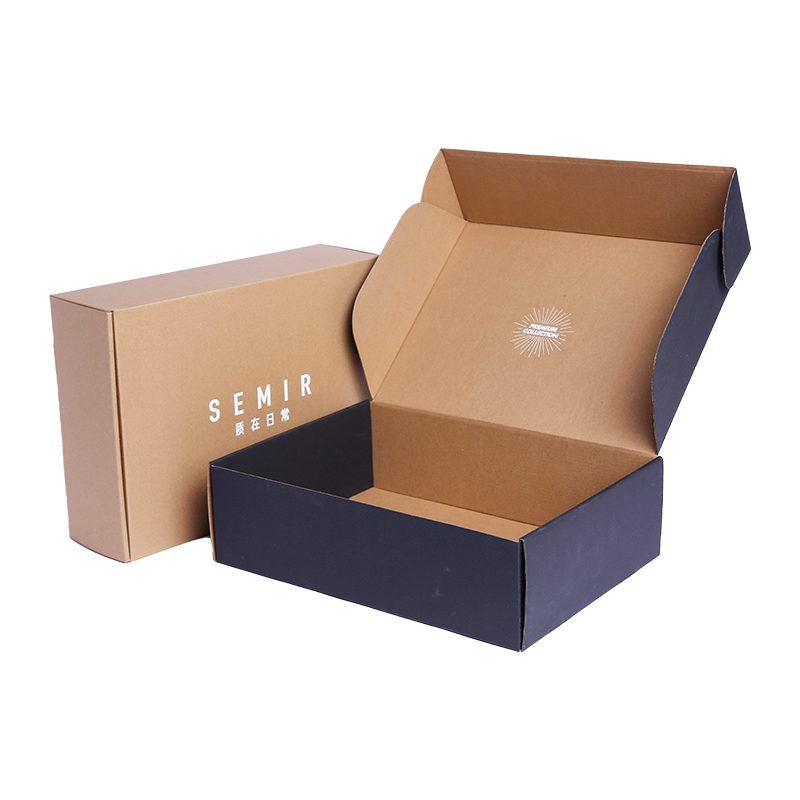-
 +86-0557-3781111 / +86-0571-56396277
+86-0557-3781111 / +86-0571-56396277
 +86-0557-3781111 / +86-0571-56396277
+86-0557-3781111 / +86-0571-56396277
Apparel packaging boxes optimize space utilization and streamline logistics processes through several key strategies and considerations:
Customized Sizing and Design:
Apparel packaging boxes are designed to fit garments efficiently, minimizing excess space while providing adequate protection. Customized sizing options ensure that boxes are tailored to the dimensions of folded or rolled clothing items, optimizing packing density.
Stackability and Nesting Features:
Packaging boxes are engineered with stackable and nesting capabilities, allowing them to be compactly stored and transported. This feature minimizes wasted space during storage and distribution, especially in warehouses and delivery vehicles.
Modular and Interlocking Designs:
Some apparel packaging boxes feature modular or interlocking designs that facilitate efficient stacking and handling. These designs improve stability when stacked, reducing the risk of shifting or toppling during transportation.
Integration with Automated Systems:
Packaging boxes are designed to integrate seamlessly with automated packaging and sorting systems used in warehouses and distribution centers. Standardized dimensions and compatible features enable efficient handling, sorting, and labeling processes.
Weight and Load-Bearing Capacity:
Optimizing the weight and load-bearing capacity of packaging boxes ensures they can withstand stacking without deformation or damage. Lightweight yet sturdy materials are used to balance structural integrity with shipping efficiency.
Void Fill and Cushioning Materials:
Efficient use of void fill and cushioning materials inside packaging boxes minimizes movement and protects garments from damage during transit. Materials such as paper crumple fill, air pillows, or biodegradable foam inserts provide cushioning while occupying minimal space.
Barcode and Label Placement:
Strategic placement of barcodes, labels, and product information on packaging boxes facilitates quick identification and tracking throughout the logistics chain. Clear labeling reduces handling time and minimizes errors during order fulfillment and inventory management.

Reusable and Recyclable Materials:
Utilizing reusable or recyclable materials in packaging boxes supports sustainability initiatives while optimizing space. Eco-friendly packaging solutions reduce waste and contribute to a more efficient circular economy in logistics operations.
Packaging Optimization Software:
Advanced packaging optimization software tools help manufacturers and logistics providers analyze packaging configurations based on volume, weight, and shipping requirements. These tools identify the most space-efficient packaging solutions tailored to specific product dimensions and distribution channels.
Collaboration with Supply Chain Partners:
Collaboration between apparel brands, packaging suppliers, and logistics partners ensures continuous improvement in packaging design and supply chain efficiency. Feedback loops and data analytics help optimize packaging solutions to meet evolving market demands and operational needs.
By implementing these strategies, apparel packaging boxes not only maximize space utilization but also contribute to streamlined logistics processes, reducing costs and environmental impact while enhancing overall supply chain efficiency and customer satisfaction.
Annhiu Address: Yishan Road and Qingshengou Road Intersection, Suzhou Economic Development Zone, Anhui, China
Tel: +86-0557-3781111
E-mail: [email protected]
Hangzhou Address: Building 3, No.286, Renliang Road, Renhe Street, Yuhang District, Hangzhou, Zhejiang, China
Tel: +86-0571-56396277
E-mail: [email protected]
Copyright © Hangzhou Shengpin Packaging Co., Ltd. All Rights Reserved.
